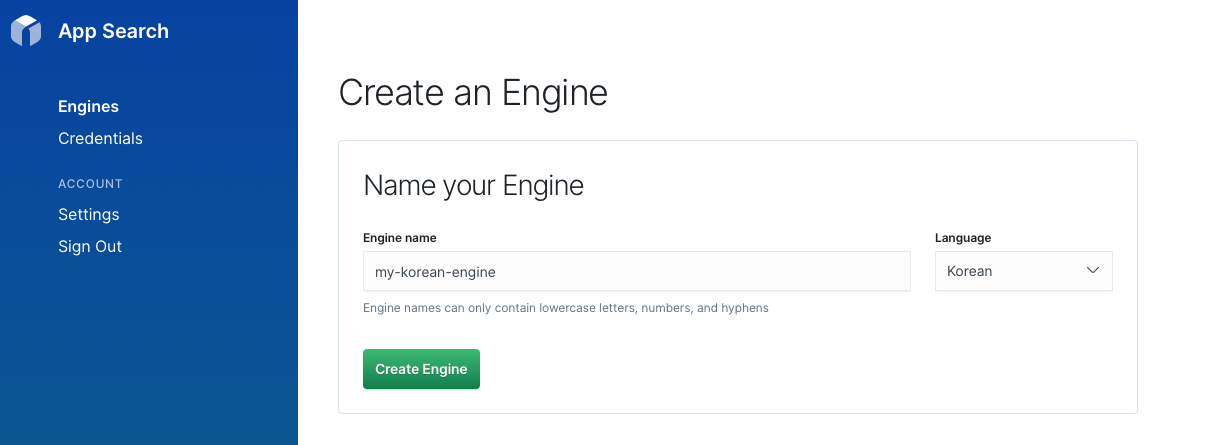Language Optimization
editLanguage Optimization
editWhen creating a new Engine during signup, from within your dashboard, or via API, you may select a language type:
Language Optimization - Creating a Korean Engine.

curl -X POST 'https://[instance id].ent-search.[region].[provider].cloud.es.io/api/as/v1/engines' \
-H 'Content-Type: application/json' \
-H 'Authorization: Bearer private-xxxxxxxxxxxxxxxx' \
-d '{
"name": "national-parks-demo",
"language": "ko"
}'
If your Engine spans multiple languages, consider using the default Universal option.
Once you have selected your language, no further configuration is required — your Engine is optimized for that language.
What does it mean to be language optimized?
Features like stemming, bigram matching, phrase matching, and typo tolerance will be fine-tuned for your chosen language.
You can select from one of the 13 language settings:
Language |
Language Code, ISO 639-1 and ISO 3166-1. |
"Brazilian Portuguese" |
|
"Chinese" |
|
"Danish"" |
|
"Dutch" |
|
"English" |
|
"French" |
|
"German" |
|
"Italian" |
|
"Japanese" |
|
"Korean |
|
"Portuguese" |
|
"Russian" |
|
"Spanish" |
|
"Thai" |
|
"Universal" |
|
The language codes adhere to a subset of the IETF RFC 5646, which coincide with ISO 639-1 and ISO 3166-1.
Once an Engine has been created with a language, it cannot be changed.
Adjusting the language requires migrating to a new Engine.